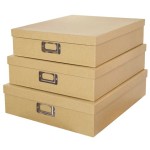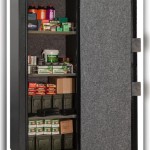Organize Your Tools With A Tool Storage Cart
Tool storage carts offer a practical and efficient solution for organizing and managing a wide range of tools. These mobile storage units provide a structured system, enhancing accessibility, improving workflow, and safeguarding tool investments. Whether in a professional workshop, a home garage, or a construction site, a well-organized tool storage cart can significantly impact productivity and overall efficiency.
The utility of a tool storage cart extends beyond mere organization. It allows for tools to be readily available at the point of need, minimizing downtime spent searching for the correct implement. This mobility is particularly valuable in large workspaces where tools are frequently required in different locations. Moreover, the secured storage offered by many tool carts protects tools from damage, theft, and environmental factors like rust and moisture.
Selecting the appropriate tool storage cart involves considering various factors, including size, capacity, material, mobility, and security features. Understanding these aspects is crucial for making an informed purchasing decision that aligns with specific tool storage needs and work environment requirements.
Key Point 1: Benefits of Using a Tool Storage Cart
The advantages of utilizing a tool storage cart are numerous and far-reaching. At its core, the most evident benefit is enhanced organization. With designated drawers, shelves, and compartments, a tool storage cart allows for the systematic arrangement of tools. This structured approach reduces clutter and ensures that each tool has a specific place, making it easier to locate when needed.
Mobility is another significant advantage. Unlike stationary toolboxes or wall-mounted storage systems, a tool storage cart can be easily moved around a workspace, bringing the necessary tools directly to the task. This feature is incredibly beneficial for projects that require frequent movement or for users who work in different areas of a workshop or job site. The reduction in travel time and the effort required to carry tools manually can significantly increase productivity.
Tool protection is also a key benefit. Storing tools in a dedicated cart shields them from potential damage. Drawers often lined with padding or foam inserts prevent tools from being scratched or dented. Enclosed storage also protects against dust, moisture, and other environmental factors that can cause corrosion and deterioration. By safeguarding tools, a tool storage cart can prolong their lifespan and reduce the need for frequent replacements.
Finally, the security offered by a tool storage cart is invaluable. Many models come equipped with locking mechanisms, preventing unauthorized access to valuable tools. This security feature is particularly important in shared workspaces or on job sites where theft is a concern. The peace of mind of knowing that tools are secure can contribute to a more relaxed and productive work environment.
Key Point 2: Factors to Consider When Choosing a Tool Storage Cart
Selecting the right tool storage cart requires careful consideration of several factors. The size and capacity of the cart are paramount. It is essential to assess the volume and dimensions of the tool collection to ensure that the cart has adequate space to accommodate all items. Overcrowding can negate the organizational benefits and make it difficult to locate individual tools.
The material of the cart is also a crucial consideration. Steel is a popular choice due to its durability and strength. Steel carts can withstand heavy loads and resist damage from impacts. Aluminum carts are lighter and more resistant to rust, making them suitable for environments where moisture is a concern. Plastic carts are often more affordable but may not be as durable as steel or aluminum options. Choosing the right material depends on the intended use and the environmental conditions of the workspace.
Mobility features, such as the type and size of the wheels, play a significant role in the cart's functionality. Large, heavy-duty casters make it easier to move the cart over uneven surfaces. Swivel casters provide greater maneuverability, allowing the cart to be easily navigated around obstacles. Locking casters are essential for preventing the cart from rolling when it is stationary.
Drawer configuration and features should also be considered. The number, size, and layout of drawers should align with the specific needs of the tool collection. Deep drawers are ideal for storing larger items, while shallow drawers are better suited for smaller tools and accessories. Drawer liners can protect tools and prevent them from sliding around. Soft-close mechanisms enhance the user experience by preventing drawers from slamming shut.
Security features, such as locking mechanisms, are essential for protecting valuable tools from theft. Keyed locks are a common option, but some carts offer more advanced security features, such as combination locks or electronic locks. The level of security required depends on the value of the tools and the security risks of the workspace.
Finally, the overall construction and build quality of the cart should be assessed. A well-built cart will be sturdy and durable, capable of withstanding the rigors of daily use. Look for features such as reinforced corners, sturdy handles, and high-quality hardware. Reading reviews and seeking recommendations from other users can provide valuable insights into the reliability of different models.
Key Point 3: Different Types of Tool Storage Carts and Their Applications
The market offers a variety of tool storage carts, each designed to meet specific needs and applications. Understanding these different types can help in selecting the most suitable cart for a particular work environment and tool collection.
Standard tool carts, also known as service carts, are the most common type. These carts typically feature a combination of drawers and shelves, providing versatile storage options for a wide range of tools. They are suitable for general-purpose use in workshops, garages, and automotive repair shops. Their relatively compact size and mobility make them ideal for moving tools around a workspace.
Rolling tool cabinets offer a larger storage capacity than standard tool carts. These cabinets typically have more drawers and a larger overall size, providing ample space for storing a comprehensive tool collection. They are often used in professional workshops and industrial settings where a significant number of tools are required. Rolling tool cabinets may also include features such as power strips and work surfaces, enhancing their functionality.
Mobile tool chests provide a combination of storage and portability. These chests typically consist of a top chest and a rolling cabinet, which can be used separately or together. The top chest provides secure storage for frequently used tools, while the rolling cabinet offers ample space for larger items. Mobile tool chests are popular among mechanics and technicians who need to transport their tools to different locations.
Specialty tool carts are designed for specific applications. For example, welding carts are designed to hold welding equipment and supplies, such as welding machines, gas cylinders, and welding rods. These carts typically feature specialized compartments and brackets for securing the equipment. Electrician's carts are designed to hold electrical tools and supplies, such as wire strippers, multimeters, and electrical tape. These carts often include features such as wire spool holders and insulated tool organizers.
Workbenches with integrated tool storage combine the functionality of a workbench with the storage capabilities of a tool cart. These workbenches typically feature a sturdy work surface, along with drawers, cabinets, and shelves for storing tools and materials. They are ideal for users who need a dedicated workspace for performing tasks while keeping their tools organized and within easy reach.
Regardless of the type chosen, investing in a high-quality tool storage cart can significantly improve organization, efficiency, and tool protection in any workspace. By carefully considering the specific needs and requirements of the tool collection and work environment, it is possible to select a cart that will provide years of reliable service.

How To Organize Your Tools Inside Toolbox Gray

Woodsmith Wall Mounted Tool Storage Plans Woods

10 Best Ways To Organize Tools Lean 5s S

Organize Your Work With Dewalt Storage Systems Acme Tools

Hand Tool Storage Organize And Showcase Your Tools Like A Pro

How To Make A Tool Storage Cabinet With Charging Station Toolbox Divas

Diversified Woodcrafts Woodworking Tool Cabinet With Tools Maple Veneer

12 Easy Organization Tips For Any Workspace

Vevor 4 Tier Tool Organizer Cart On Wheels 150 Lbs Garage For Work Au

42 Pack Tool Box Organizer Rolling Chest Cart Cabinet Workbench Dark Gray
Related Posts








